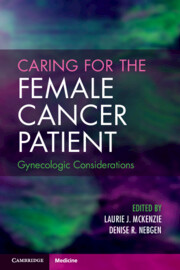4 results

Caring for the Female Cancer Patient
- Gynecologic Considerations
- Coming soon
-
- Expected online publication date:
- July 2024
- Print publication:
- 31 July 2024
-
- Book
- Export citation
Contributors
-
-
- Book:
- Human Assisted Reproductive Technology
- Published online:
- 16 May 2011
- Print publication:
- 31 March 2011, pp ix-xii
-
- Chapter
- Export citation
Chapter 19 - Granulosa cells and their impact on human ART
-
-
- Book:
- Human Assisted Reproductive Technology
- Published online:
- 16 May 2011
- Print publication:
- 31 March 2011, pp 209-222
-
- Chapter
- Export citation
6 - Evaluation of the Infertile Female
- from PART II - INFERTILITY EVALUATION AND TREATMENT
-
-
- Book:
- Infertility and Assisted Reproduction
- Published online:
- 04 August 2010
- Print publication:
- 15 September 2008, pp 55-69
-
- Chapter
- Export citation



